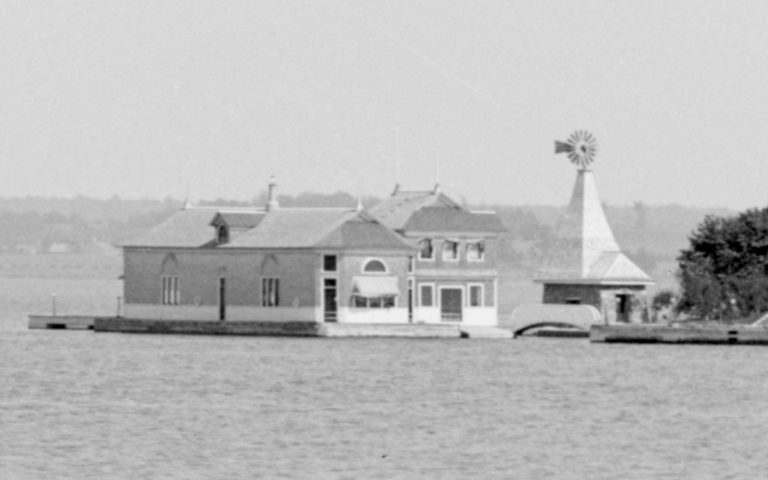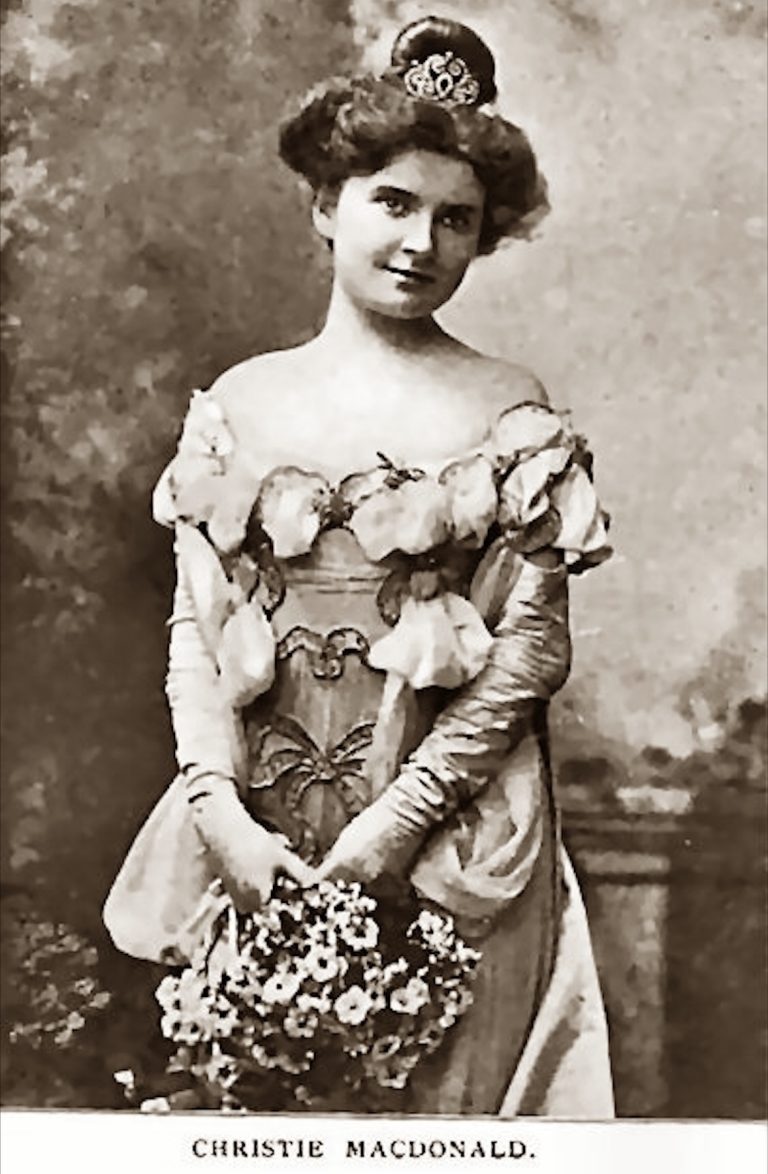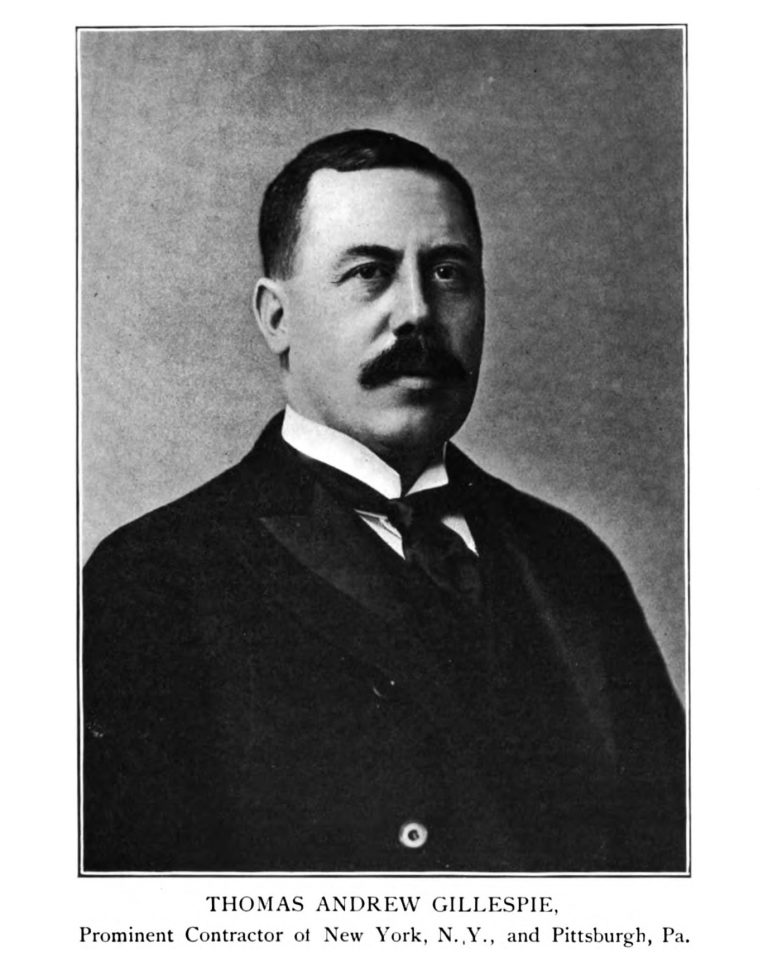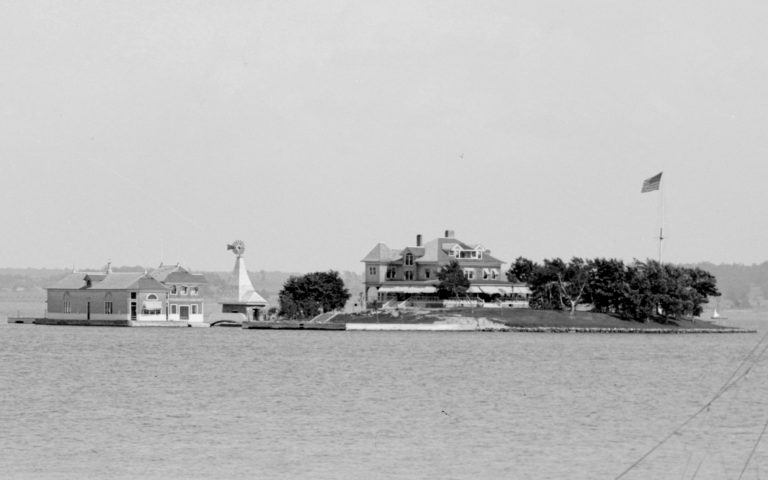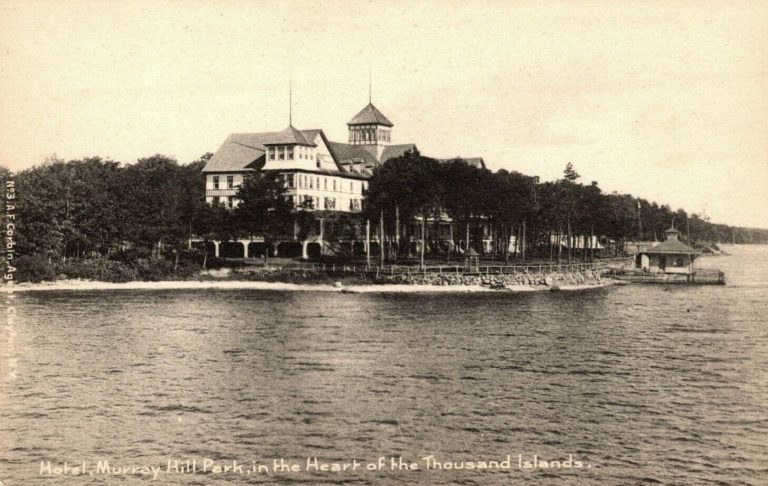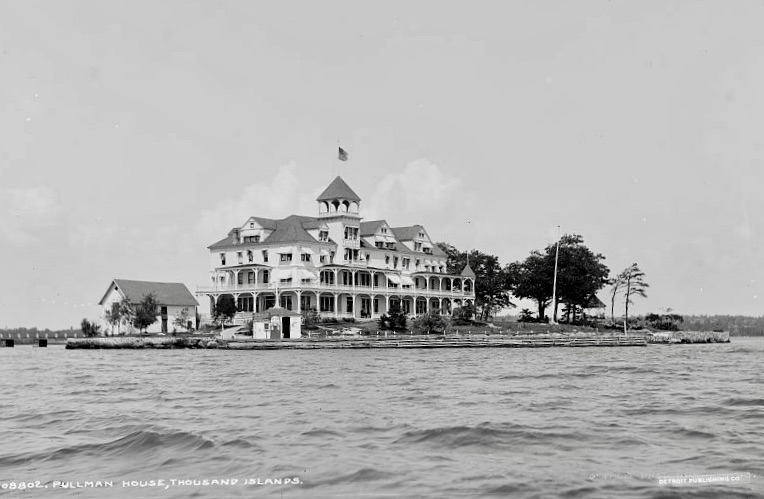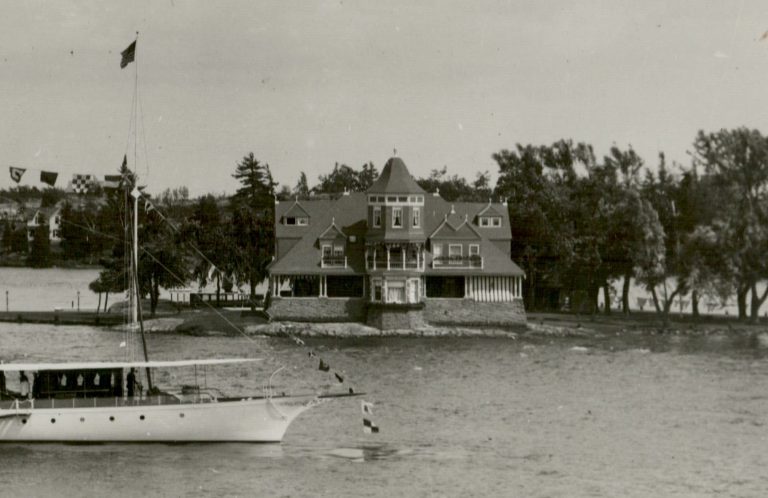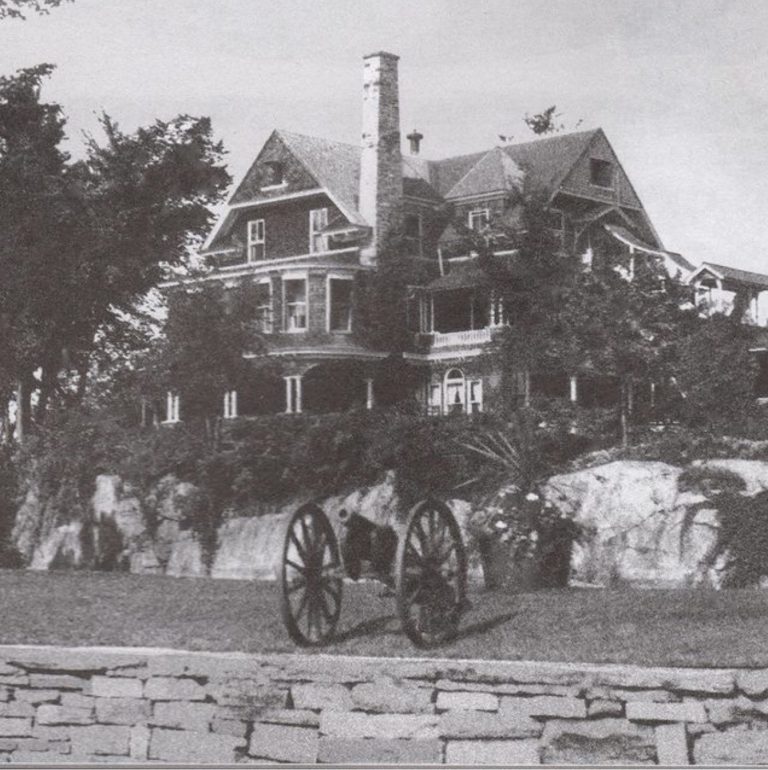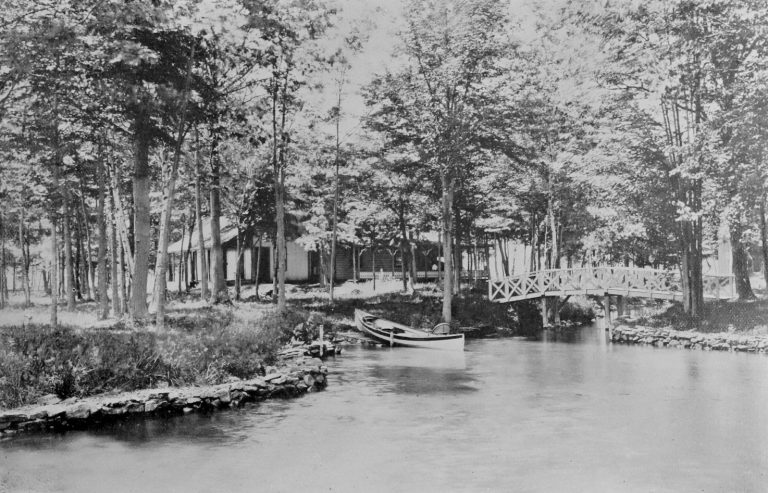General Contracting Giant Thomas A. Gillespie Builds Summer Home on Basswood Island
Thomas Gillespie, a close friend of George C. Boldt, bought Basswood Island from Charles A. and Marie C. Terry of New York for $1000 on July 30, 1894. By this time. Gillespie, a general contractor who had previously ventured into business with George Westinghouse, Jr., was well on his way to becoming a multi-millionaire, having established business in the New York Metro and Pennsylvania region.
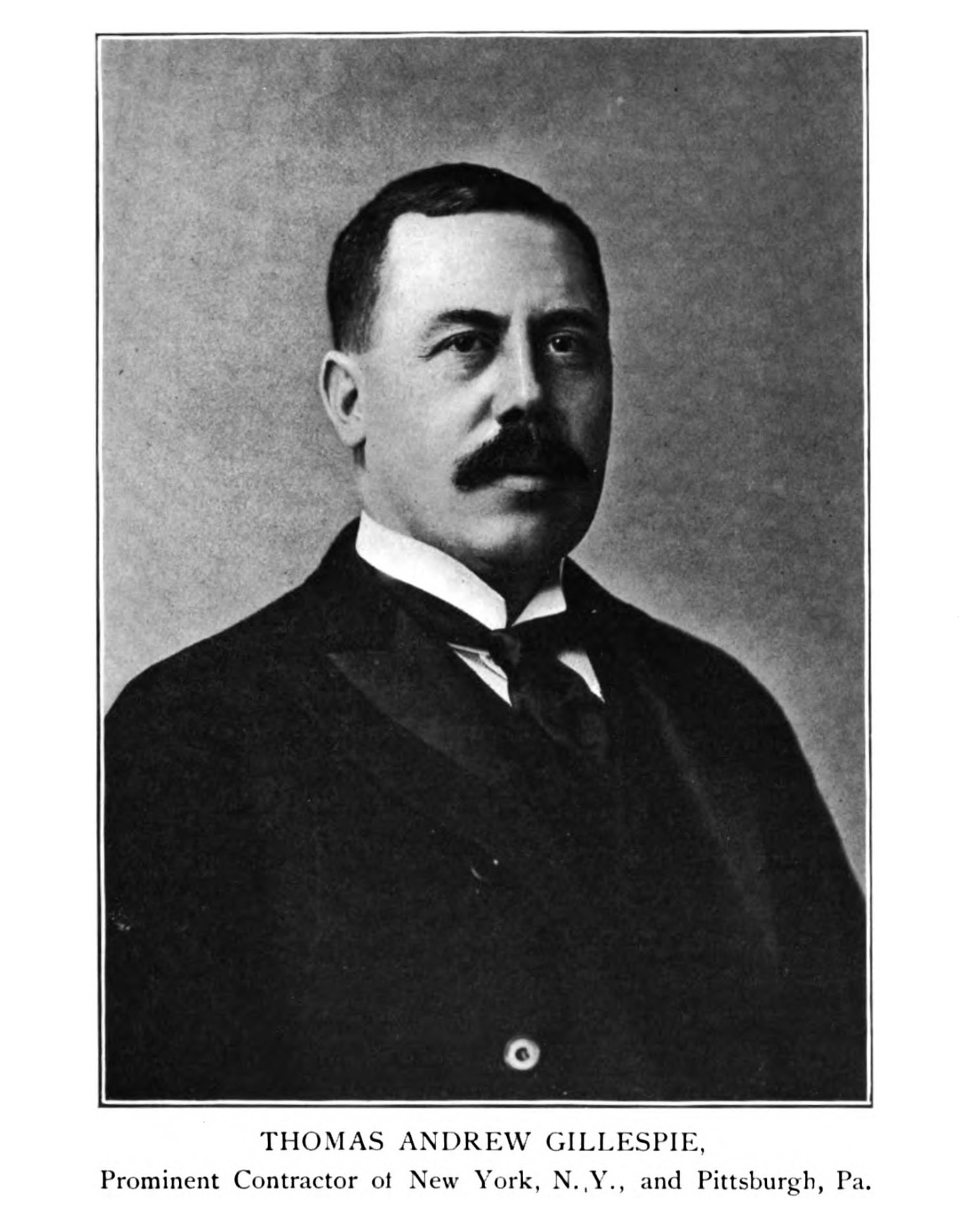
Born July 1, 1852, in Pittsburgh, Pa., to James and Diana Gillespie, Thomas A. Gillespie graduated from public high school a mere fourteen years later, going on to a very successful business career that saw him obtain the status of millionaire. After high school, Gillespie began working as a clerk with the Pittsburgh Gas Company, working for a short period of time before working for the office of Lloyd and Black, iron manufacturers, in 1868.
Three years later, he went to work for the iron manufacturers Lewis, Oliver and Phillips, remaining there for eight years as a traveling agent. During this time, he married Miss Julie B. Wall in 1875. Together, the couple had four children: Thomas H., Henry L., Jean, and James P.

In 1879, Thomas went into business for himself, manufacturing bolts and nuts. Five short years later, he partnered with George Westinghouse, Jr., and took advantage of the natural gas boom in Pittsburgh. Westinghouse was already established with the Westinghouse Air Brake Company, formed in 1873, and then Westinghouse Electric in 1885, while Gillespie went on to form with his brother R. G. Gillespie, the firm T. A. and Robert G. Gillespie, general contractors, in 1890 which eventually became the T. A. Gillespie Company.
It was in 1895 that Thomas erected his summer home on Basswood Island near Clayton. The cottage was estimated to cost around $5,000, situated nearer to Grenell and Little Pullman Island than May Irwin’s cottage on Club, later Irwin, Island. The Watertown Daily Times wrote briefly of the cottage on July 1, 1895: “He has an elegant steam yacht, and the grounds have been handsomely laid out, making a valuable addition to the property in this locality.”
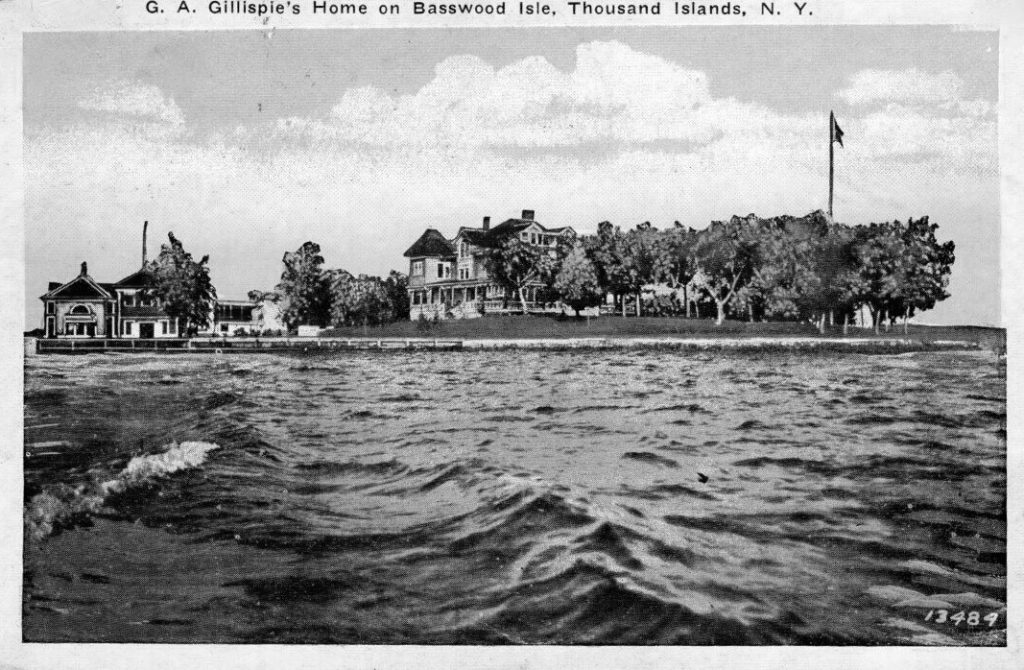
In November of 1900, a severe windstorm hit Clayton, tearing off part of the roof of the McKinley Block on James Street. The storm managed to create some drama on the water, too. As reported in The Times on the 23rd—
The tug Proctor with three barges was caught at the foot of Long Island, when the Proctor left two of the barges at anchor and, taking one of them, started for a safe landing at Clayton, where she tied up at the railroad dock.
The two barges left must have got lonesome, for they soon started for down the river, making very good time. But as there was no pilot aboard, one barge landed high and dry on Hogs Back island, just opposite Round Island. The other barge struck Basswood Island, where she is safely anchored. Both boats went on the islands sidewise.
Two years later, Gillespie would have a sea wall built around the entire island.
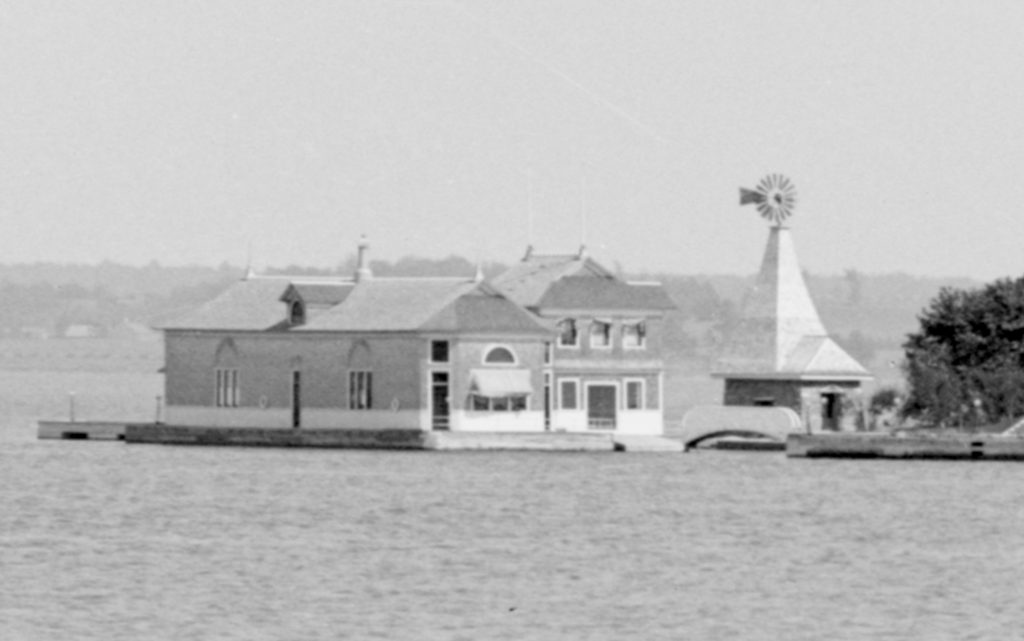
According to Gillespie’s obituary printed on January 28, 1926, in Watertown Daily Times upon his death, his businesses included——
Among the big jobs it undertook early in its career was the St. Lawrence Power company at Massena, N. Y.; the water supply works of the East Jersey Water Company, Paterson, N. J.; locks and dams for the United States government on the upper Ohio River and later subways in New York City.
One rather infamous incident occurred during WWI on Oct. 4, 1918, when an explosion occurred at a TNT loading plant in Morgan, N. J., which was under Gillespie’s business umbrella. The explosion caused 64 fatalities and resulted in $10,000,000 worth of property damage. This resulted in a senate investigation, and at the time, it was believed an “enemy alien” had caused the explosion. According to The Times article dated October 7, 1918—
Mr. Gillespie purchased the patents of the Boynton engine and took them to New Jersey for their manufacture. This engine was manufactured by the old Watertown Steam Engine Company.
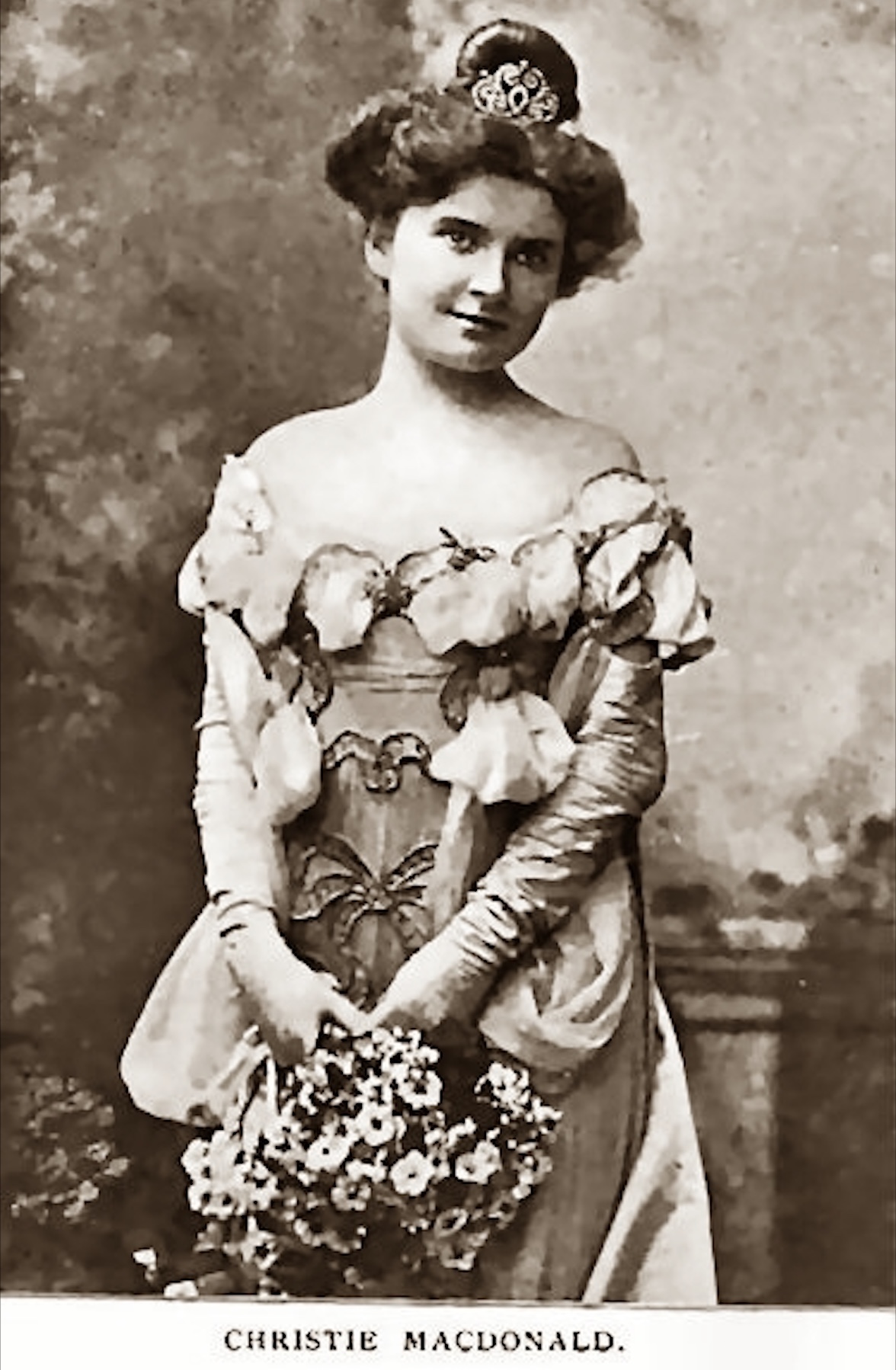
At about the same time, Gillespie’s son, Lieut. J. P. Gillespie, was an ambulance driver in Italy and recently decorated by King Victor Emmanuel for bravery as a member of the American Ambulance division in June of that year. Lieut. Gillespie was one of seven Americans to win the Medal of Valor, with Silver Star, which is the highest decoration with one exception conferred by Italy. The younger Gillespie’s company transported 10,800 wounded Italians from the battlefield.
Not to be outdone in the arena of headline news, one of Thomas Gillespie’s other sons, Henry L., married actress Christie MacDonald in 1911. MacDonald was a Canadian-born music-comedy actress who also starred in operas, and the 1913 musical Sweethearts was written specifically for her by Victor Herbert, the leading operetta composer of his era.
Below: Christie MacDonald, “Sweethearts,” from deCoste Centre Internal’s YouTube channel.
The two would spend their summers at the family cottage on Basswood Island. Along with famed stage and silent film actor James K. Hackett, who was born on Wolfe Island and purchased “Woodland” on the mainland opposite May Irwin’s cottage, The Times reported—
With these three it is probable that there will be a regular colony of stage people of note who will spend their summers here, for they all have their associates as guests and this will serve to make them acquainted with the beauties of the Thousand Island region.
Seven years later, the couple found themselves in the midst of a mishap on the river. While visiting the summer home on Basswood Island in July 1925, the couple and an unnamed guest from New York leaped from the island’s motor launch when the boat suddenly burst into flames after its engine backfired upon pulling into the Clayton Town dock.
Christie’s pocketbook held jewelry valued at $12,000 (approximately $211,000 in 2023) was lost in the river but later recovered after State Troopers guarded the spot and retrieved the valuables.
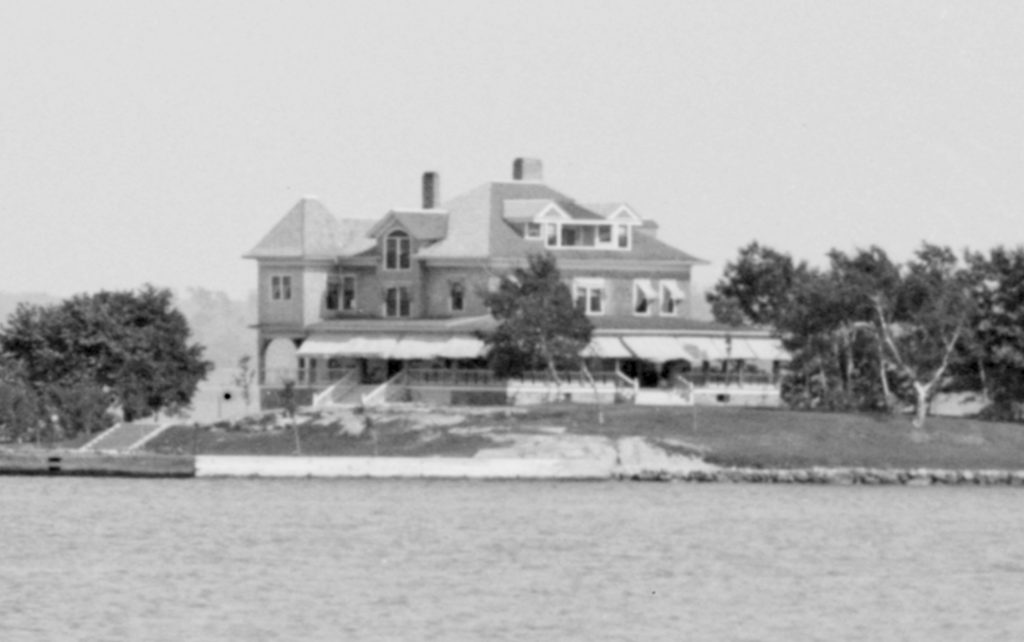
As for the senior Gillespie, 1925 was the first year in many that Thomas did not visit his island. He passed away at his West Orange, N. J. home unexpectedly the following January at the age of 74. The property was left to his wife, who sold it later that year (1926) to William Arthur Moore.
An entire article could be devoted to William, one of Jefferson County’s distinguished native sons who was a prominent attorney in New York City—but unfortunately, Moore passed away in December 1928, only two years after purchasing the Basswood Island, at the age of 56. His wife, Lois Cooper Moore, a descendent of Norris Woodruff, far outlived him, passing away in 1975 at the age of 98. Her great-uncles included Henry Keep and Roswell P. Flower.
Lois retained ownership of Basswood Island for over two decades. During these years, she held a number of picnics, sometimes numbering 300, for the Republican women of Jefferson and Lewis counties. Her sister, Gertrude Annie Cooper Yost, often helped with these social engagements and was married to Nicholas Dockstader (Doxtater) Yost, another Jefferson County native son, having been born in Theresa. Yost also died at a young age (42).
When the property was put up for sale in 1949, it was described as a “Fully furnished 11-room house. Five master bedrooms. Five baths. Forty-foot living room. Three fireplaces. Yacht house with ninety-foot slip.” It was purchased in 1951 by Mrs. Margaret R. Freeman of Gouverneur, widow of Frank Nelson Freeman.
Basswood Island was later owned by Dr. John (or Thomas) Murphy, Syracuse. In 1969, the boathouse was lost to fire, the Murray Isle Fire Department managing to prevent flames from spreading to a nearby pumphouse and the doctor’s large summer home. Six years later, the home that was built by Thomas A. Gillespie in 1895 was also lost to fire. The Watertown Daily Times reported on June 26, 1975—
Clayton and fishers Landing were called at about 7:03 p.m., but by the time the Clayton fireboat arrived, the cottage had already collapsed in flames.
Clayton Fire Chief William Solar said Dr. Murphy was not at the cottage at the time, but that his three teenage sons were there, and had been fishing.
As the three were upset when firemen arrived, they were taken to a friend’s cottage on a neighboring island, and no information was obtained to indicate what caused the fire, Mr. Solar said.
Mr. Solar had praise for “about a dozen” persons from cottages on nearby island who took their boats to the fire scene and used their portable pumps to prevent the flames from spreading to two small storage buildings on the island. The fire was spreading in the grass, he said, but the neighbors quelled the grass fire and saved the youths.
Today, a modern home occupies the island, as shown below, and last sold in 2016 for $630,000.

